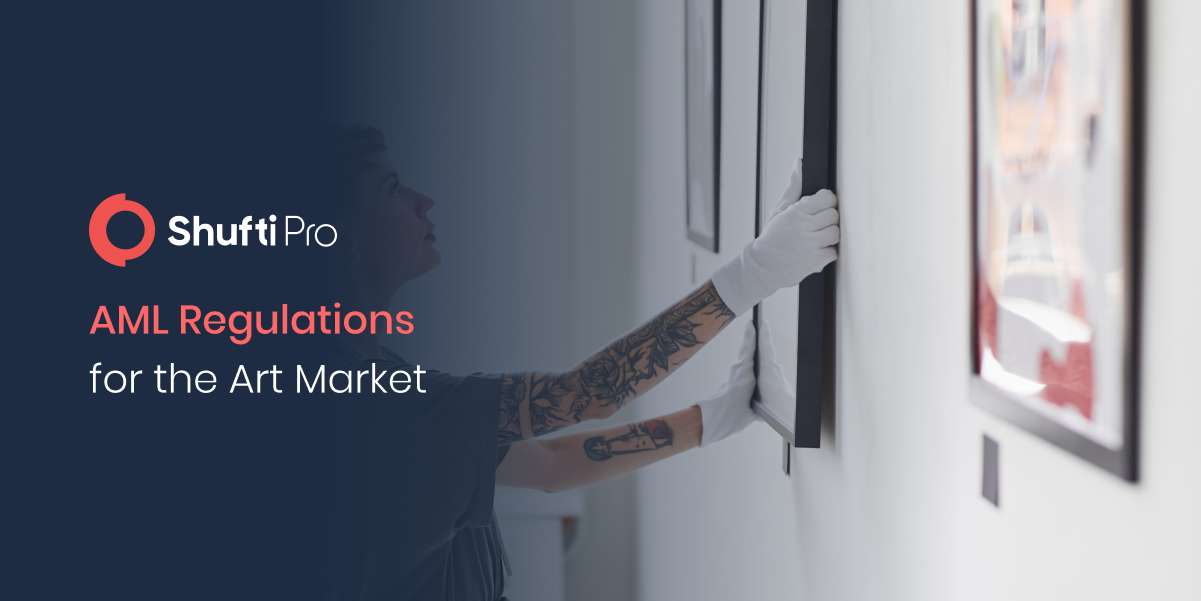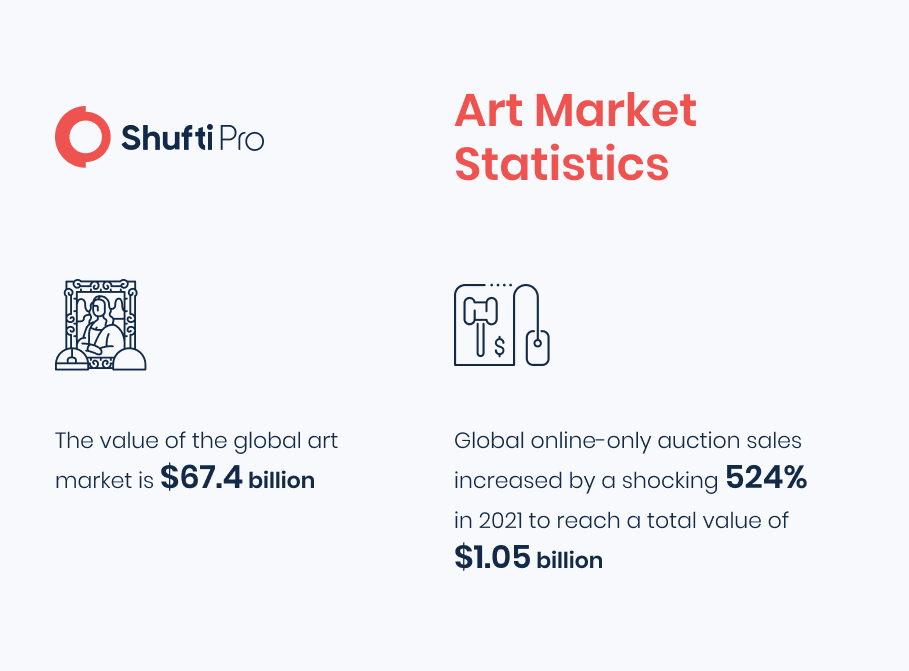A Brief Insight into AML Regulations for the Art Market

While the banking sector faces increased scrutiny to prevent illicit financial flows, a significant amount of dirty money is still being laundered through the art market. Although financial regulators have strengthened anti-money laundering (AML) regulations in various countries, transactions in art and antiques remain an area of concern.
The US and UK are the two biggest markets for art and antiques where oligarchs and corrupt politicians spend their dirty money in order to gain legitimate funds. Considering the high volume of illicit activity through art purchases, financial regulators have repeatedly urged art dealers throughout the world to incorporate AML screening measures.
The Art Market and Money Laundering
Even though the majority of art purchases involve legitimate funds, numerous cases have shown that Russian billionaires and drug lords use the art market to obscure the origins of their illegally-obtained funds. Following such a purchase, the art or antique item is stored in hidden warehouses for a particular time and then put up for sale.
Moreover, art can also be pledged as collateral in order to get loans in the form of legitimate cash. The Covid-19 outbreak gave rise to online art auctions that have had a serious effect on the traditional art market. According to a report, the global online-only auction sales, including the three biggest auction houses, Sotheby’s, Christie’s, and Phillips, crossed the $1 billion mark for the first time in the last year.
Online art purchases contribute to a large number of transactions that are completely unmonitored and also involve a number of intermediaries like advisors, art dealers, and auction houses. Considering these visible issues and loopholes in art dealings, financial regulators have come up with amendments to AML regulations that apply to the art market as well as antiquities dealers.
Updates to US Regulations for the Art Industry
In the US, financial institutions and other businesses need to comply with the regulations provided by the Anti-Money Laundering Act of 2020 (AMLA 2020). The AMLA updated the definition of “financial institution” to include “a person engaged in the trade of antiquities, including an advisor, consultant, or any other person who engages as a business in the solicitation or the sale of antiquities.” According to the new definition, art and antiquities dealers, as well as those involved in art deals fall under the scope of the AMLA.
The AMLA obliges antiquities dealers to implement sufficient methods for anti-money laundering/combating the financing of terrorism (AML/CFT). Corrupt entities and oligarchs that intend to launder money are provided with a certain level of anonymity because of the system involving intermediaries like agents and brokers. With updates in regulations, it is clear that AML compliance will be ensured in the US art market sooner or later.
The US Senate authorised the Senate Permanent Subcommittee on Investigations in July 2020 to identify the reasons why the US policies of AML sanctions are undermined in the art industry. The consequent efforts showed that the art market is the biggest unregulated market in the US. A study also revealed that there is a lack of AML measures in the major auction houses in the country. Those that do implement AML screening are doing it voluntarily and normally consider the client’s representative as the person to make the transaction. In most cases, the auction house does not require proof of identity from individuals or the UBO (ultimate beneficial owner) information from businesses. The Senate investigation determines that art dealers do not have AML controls as the current regulations do not oblige them to do so.

Canada’s Regulations for the Art Market
The Financial Action Task Force (FATF) issued its Mutual Evaluation Report for Canada in 2016, which highlighted that art dealers and auction houses are highly vulnerable to financial crimes like money laundering and terrorist financing. Arts and antiquities, as well as luxury cars and yachts, are the most commonly used medium by Russian oligarchs amid sanctions following the Russia-Ukraine conflict. Furthermore, in 2018, the Standing Committee on Finance of Canada’s House of Commons released a report named ‘Confronting Money Laundering and Terrorist Financing: Moving Canada Forward’. The report comprised 32 recommendations related to updates and amendments to Canada’s Proceeds of Crime (Money Laundering) and Terrorist Financing Act (PCMLTFA).
The report also states that precious metals and stones dealers were obliged to follow AML regulations in Canada (when the report was published). However, this was not the case for high-value art or luxury goods dealers. The report also listed a set of measures that would ideally contribute to a better AML/CFT regime in the country. It was suggested in the report that “Federal, provincial, and territorial governments should collaborate to close the loophole regarding the transaction of sales between parties who are not subject to PCMLTFA reporting requirements, which creates vulnerability for money laundering to occur.”
The EU’s 5th AMLD
The EU’s Fifth AMLD (Anti-Money Laundering Directive) broadens the scope of AML regulations to include art traders, intermediaries in art dealings, art handlers at freeports, and those who make transactions through freeports when values exceed EUR 10,000. Moreover, the 5th AMLD also includes transactions in other high-value items like arms, precious metals, antiquities, and artifacts. As smaller transactions that are linked to each other can collectively go beyond the threshold that is set by AML requirements, all payments are now subject to transaction monitoring. Enhanced due diligence is required in high-risk cases and involves requiring a photo as well as ID document from individuals and the sources of money from businesses.
The Fifth AMLD also obliges art dealers and the relevant entities to disclose the ultimate beneficial ownership information of businesses, trusts, and foundations. The directive defines the term “obliged entity” as credit and financial institutions and regulated service providers operating outside the financial sector. It also lists freeports under “obliged entities”. The regulation allows EU member states to implement the rules obliging businesses that deal in countries with inadequate AML/CFT measures to perform enhanced due diligence and transaction monitoring on a regular basis.
What Shufti Offers
Enhanced due diligence (EDD) and Anti-Money Laundering (AML) screening are the keys to combating money laundering in the art market. Art dealers must adopt the risk-based approach and employ AML checks to ensure that illegal money has not been used for purchasing artwork. Moreover, ongoing AML and transaction monitoring can assist organisations in maintaining an updated risk profile of every buyer making compliance with the regulations easier. AML screening checks the background of buyers against several sanction lists and PEPs.
Shufti’s AML Screening solution allows your art dealership to validate every buyer and ensure that dirty money is not used for transactions. Furthermore, our ongoing transaction monitoring allows businesses to keep a check on every transaction being conducted by the customers.
Want to learn more about AML Screening for the Art Industry?










